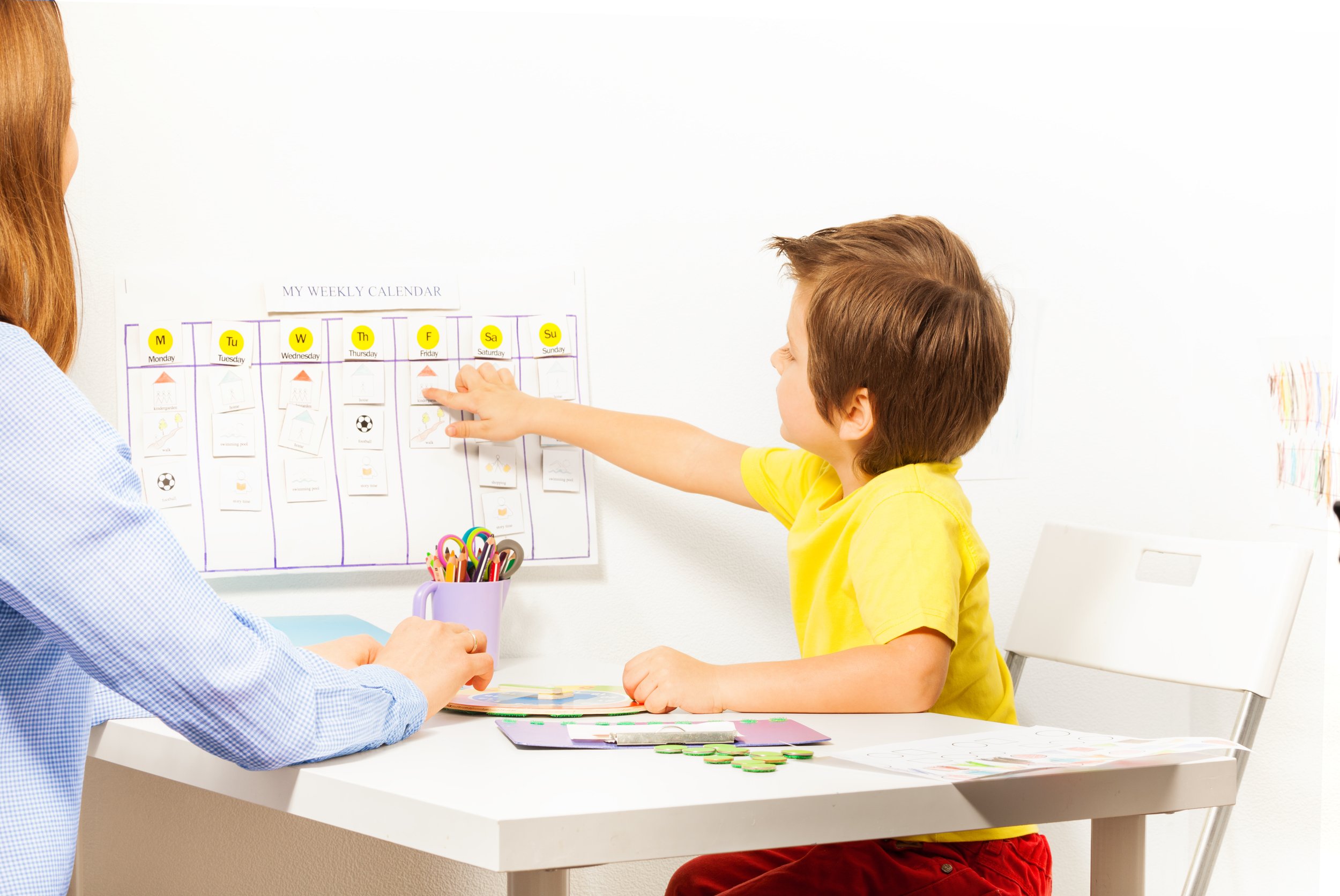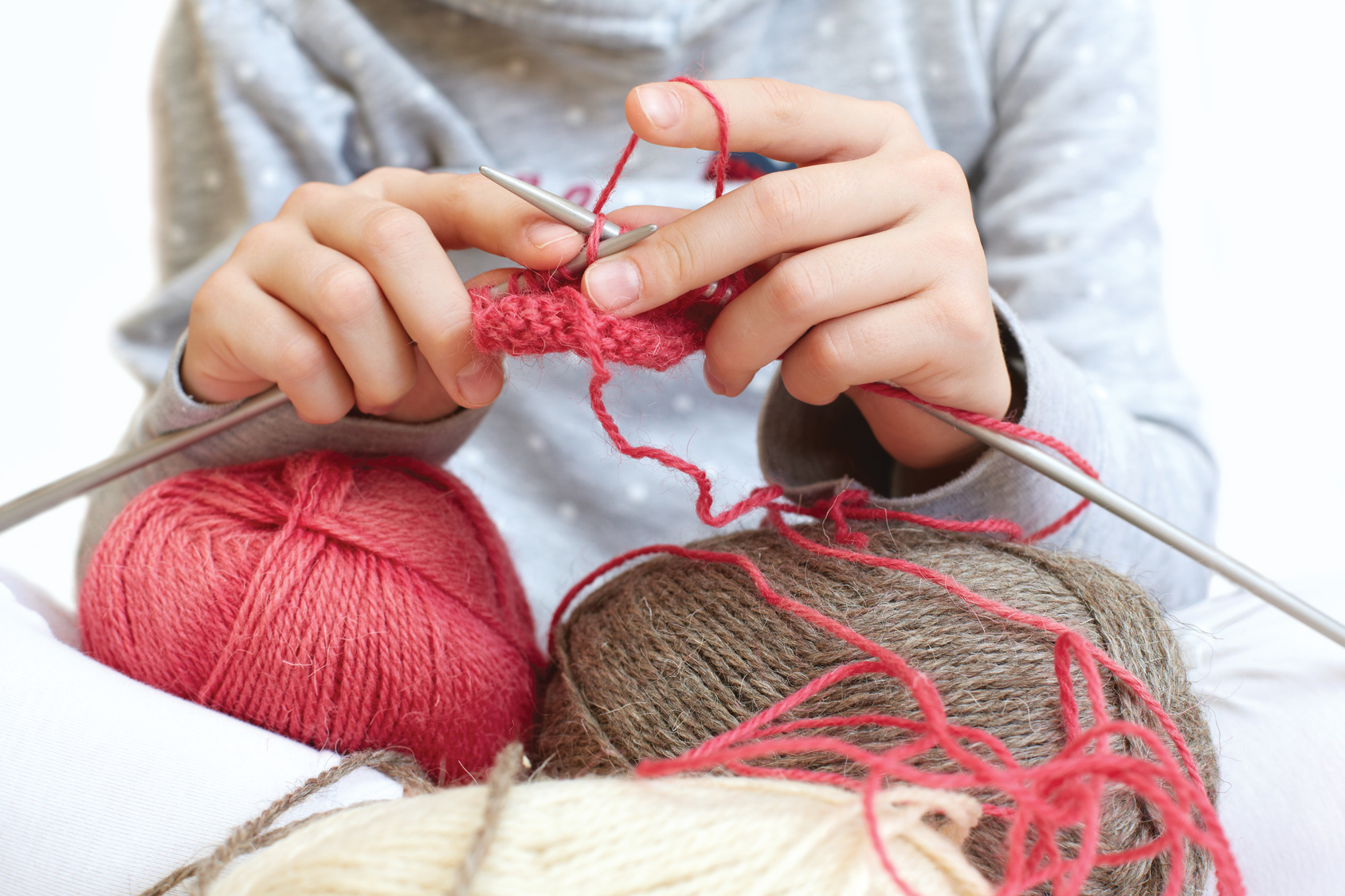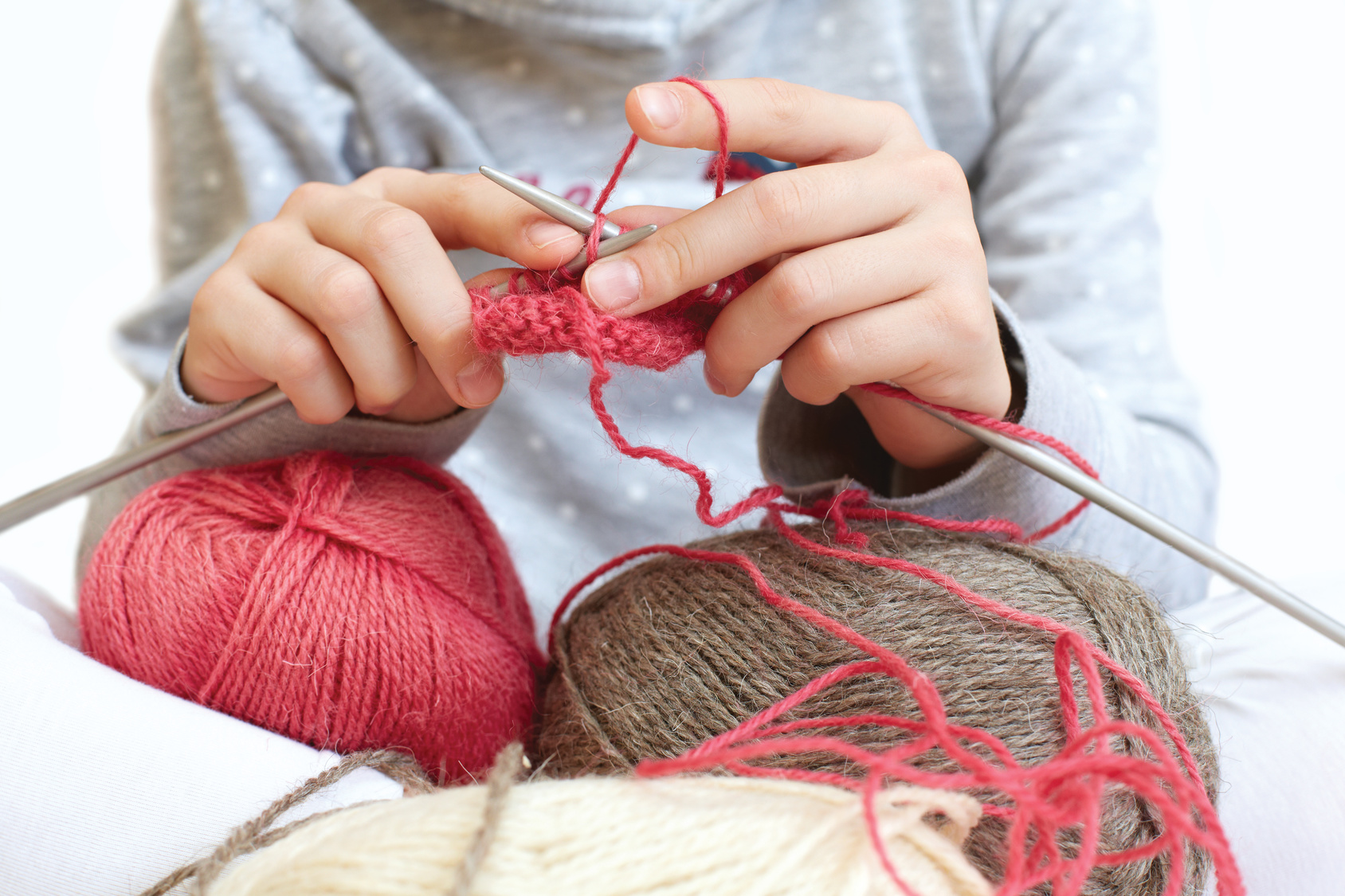Real Steps You Can Take to Make Your Homeschool More Intersectionally Aware
Don’t let the fact that intersectional homeschooling is a work in progress deter you from making it part of your own homeschool.
Don’t let the fact that intersectional homeschooling is a work in progress deter you from making it part of your own homeschool.
Intersectionality seems theoretical, but it’s meant to be a practical, ongoing project — and it’s easier to bring it into your everyday homeschool than you might think. When we think about learning, we tend to think about it in terms of finding answers, but intersectional homeschooling often starts with asking better questions.
Recognize different experiences. This can be as simple as remembering that, for example, not all women had the same experience with winning the vote in the United States — Black women who joined in protest marches were asked to move to the back. It can also be as difficult as asking someone you’ve only recently met what pronouns they prefer, but in order to be genuinely open to acknowledging differences, you have to be aware of them. This can be hard because we’ve been taught that it’s rude to formally recognize these kinds of differences, but if we’re not willing to be brave enough to face differences when we find them, we’re likely to get stuck in our assumptions.
Get familiar with what your learning leaves out. Any curriculum can become an intersectional-friendly curriculum because intersectionalism is about looking for who or what has been excluded from the central narrative. Take time to probe the resources you’re using to look for the stories, people, and experiences who are left out — you may start by asking “What were the poorest people doing?” or “Where were the Native Americans while this was happening?” Seek out other points of view. Because resources tend to reflect the strongest power structure, it can be difficult to find sources from other perspectives. It’s challenging sometimes even when you do because work outside the central narrative rarely comes from the same educational background or has the same associated resources and commentary that you find inside the canon. It’s worth finding and using these resources anyway, even if it feels like you are having to start from scratch.
Don’t be afraid to be complicated. Sure, it’s easier to say “Women’s experiences during the Gold Rush were very different from men’s experiences,” but the default for these kinds of generalizations tends to be cis white heterosexual people. Those stories matter, too, but we should be very careful not to pretend those stories are somehow representative experiences. Any time a resource highlights people who match your experiences as a baseline, be ready to seek out other points of view.
Ask questions about your curriculum. Just asking these kinds of questions is a step toward more intentional homeschooling.
WHO CREATED IT? Homeschool curricula can be hard to pin down in this arena, but it’s worth hunting down the academic credentials of its creators as well as whatever you can find out about their place in the power matrix. You definitely don’t have to forego otherwise great curriculum because it’s created by a person in a dominant power structure, but you want to be aware of what might be missed or left out because of it. (That’s true for this article, too!)
WHO IS THIS CURRICULUM ABOUT? It’s a common joke that sex-ed books seem to be written exclusively for cis heterosexual white people because that’s what all the pictures in the books seem to show, but every curriculum comes with built-in biases. That’s okay — what’s important is recognizing those biases when you see them and putting together a curriculum that includes more people than it leaves out.
WHO BENEFITS? This isn’t necessarily about dollars and cents, though financial aspects can certainly come into it. More, it’s about considering what the bigger influence of a particular program might be — if everyone used this program, what would everyone know because of that? And what — or who — would be left out?
ARE THE MESSAGES HELPFUL OR HARMFUL? Often, the answer to this question is complicated. You may want to go through a series of questions about common intersections (gender identity, disability, sexual orientation, nationality, class, race, etc.) and ask “How does this curriculum support this experience? How does it marginalize it?” Often a lack of intersectionalism is inadvertent — part of the challenge is that people inside a dominant power structure tend to be oblivious to that fact — so identifying potentially harmful messages isn’t about trashing a curriculum but about adjusting it to make your homeschool more inclusive while you are using it.
You Need a Homeschool Routine — and It's Not Hard to Build One
“We loved the idea of living without a schedule, but we quickly discovered that we were miserable living without a routine.”
“We loved the idea of living without a schedule, but we quickly discovered that we were miserable living without a routine.”
It’s part of the magic of homeschooling: Your schedule is totally your own. No early morning obstacle course to make it to the bus stop, no after-school homework sessions fueled by healthy snacks and cajoling, no trying to tuck everyone in bed in time for an optimal night’s sleep. You’re free to wake up at noon, do something different every day, and invent your schedule on the fly.
“We loved the idea of living without a schedule, but we quickly discovered that we were miserable living without a routine,” says Jordan Rankin, who started homeschooling her now-13-year-old twins when they were in fourth grade.
Rankin’s family started out strong, but within a few weeks, they were grumpy, tired, and disoriented. Not having a daily to-do list had felt liberating, but living without a routine proved disorienting. That’s no surprise, says Barbara H. Fiese, a psychologist at Syracuse University who studies family routines and rituals. According to Fiese, reliable routines can have a positive impact on the whole family: Kids with regular routines sleep better, get sick less often, do better in school, and generally exhibit better behavior than children who don’t have a daily routine. This repetition also builds stronger family ties and improves family communication.
A routine is not the same thing as a schedule. You can have a routine and still eschew daily deadlines. The key is to have a few moments that anchor your day — kids know to expect them, and they know what to expect when these moments roll around. However wild, spontaneous, and unplanned the rest of your day may be, routine anchors give days a sense of meaning and continuity. Routines can be as simple as family dinners around the table, morning readalouds on the couch, or walking the dog together before bedtime — they key is to pick moments that fall into a reliable rhythm for your day.
Start slow, and keep it going.
The biggest challenge people run into with starting a homeschool routine is trying to do too much. You’re most likely to succeed if you let your routine develop organically, and one of the most effective ways to do that is to add one piece at a time, giving your life plenty of time to adjust around that piece before trying to add something else. Say you love the idea of family dinner. Get your family dinner up and running, and keep it running for three or four weeks before adding another element to your routine, and the dinner routine is more likely to stick.
Think rhythm, not schedule.
A schedule implies that you’re on the clock, but a rhythm is all about patterns: After breakfast, we light a candle and read a book. After we water the garden, we clean up the front room. On Tuesdays, we go to the park. On Saturday nights, we make pizza. In December, we take the month off. Start by thinking about the year: What are the big annual events that shape your annual schedule? Then look at the month, the week, and finally the daily happenings of your household. A combination of all those elements yields a meaningful family routine.
Acknowledge your natural rhythm.
Rhythms work best when they’re naturally occurring — so if your kids rarely make it down to breakfast before 11 a.m., a wake-up-and-watch-the-sunrise routine might be doomed to fail. Why not watch the sunset together instead? It’s likely that your family has rhythms already — think back to the last few really good days you had together, and look at what the patterns of those days were like. You’ll probably find a clue to what makes a happy routine for your family.
Don’t be afraid to shake things up.
A routine gives your days anchors and expectations — but it also gives you something to break when you need a little dose of adventure. Occasionally shaking up your regular rhythms can be a lot of fun — just as knowing that you have them to go back to offers everyone a sense of security and connection.
—Sabrina Diaz
This was originally published in the summer 2019 issue of HSL.
My Practically Free Guide to Getting Started Homeschooling Elementary School
This is my go-to recommendation for new homeschoolers — it's designed to help you find your rhythm, build comfort with leading your students’ learning, and keep the learning going as you find your way. It’s basically a six-month, low-cost-investment guide to starting homeschooling.
Every summer, I get email from people who are trying to find the “perfect curriculum” for their brand-new homeschools, but the truth is, you probably won’t know what a perfect curriculum actually looks like for your family until you get through a few months of homeschooling. Homeschooling is partly about curriculum, but it’s also about understanding how your kids learn, what your family’s daily rhythm feels like, and what you’re actually willing to do every week to get ready for your family’s learning life.
That’s why I always recommend that new homeschoolers wait six months before making any major curriculum purchase. That’s really how long it takes most people to settle into homeschooling enough to know what you really need in a curriculum — which may turn out to be different from what you think you want when you first get started. It also lets you test-drive being a homeschool parent — which often involves different kinds of effort that new homeschoolers might expect. This sounds intimidating, but for elementary school, it’s SO EASY. This is my go-to recommendation for new homeschoolers — it's designed to help you find your rhythm, build comfort with leading your students’ learning, and keep the learning going as you find your way. It’s basically a six-month, almost-free guide to starting homeschooling. (As with all homeschool projects, you’ll have to spend money or time to get quality curriculum — this is low-cost, so it asks for a not-insignificant parent-time investment. I don’t think there’s any curriculum that’s almost free, hands-off, and a great educational choice, but two out of three isn’t bad!)
What you need:
A readaloud (You can choose any chapter book that you’re excited about, but some of my favorite starter-readaloud recommendations are: The Adventures of Nanny Piggins, The Pepins and Their Problems, The Vanderbeekers of 141st Street, or The Adventures of Pippi Longstocking, all of which are sometimes laugh-out-loud funny.)
A non-fiction book for history (There are lots of good ones, but The People Shall Continue makes a really good spine for Native American studies, A Child’s Introduction to African American History is a great take on U.S. History, or explore life in medieval times with Good Masters! Sweet Ladies! Voices from a Medieval Village. Choose one book as your focus.)
I don’t recommend buying math for the first months of your homeschool; instead, take this opportunity to test out different math options by using sample lessons. Math can be one of the trickiest curriculum buys because kids learn math in such different ways, so give your student a chance to play with several different curricula these first months. It will become clear which are better and worse fits. It will also give you an idea of what level to start with! If you spend a week on each sample lesson, this should get you through at least 10+ weeks. I’d try:
Beast Academy (this link takes you to the books, but check out the online samples, too — look for the downloads in the right sidebar of the page for the book you’re interested in)
Singapore Dimensions (click on the grade level to see the samples for that book)
Math Mammoth (the downloads are in the right sidebar)
Teaching Textbooks (scroll all the way to the bottom for the sample lessons)
Organizing your day:
Most days, start with nature journaling. Buy a notebook, and check outside to record the date, weather conditions, and one nature observation. Do an activity in The Nature Connection workbook a couple of times a week — many of them can be done spur of the moment, but a few require a little advance planning. Aim to check out one book a week from the library about a nature topic you’ve touched on, and read it together. This is pretty low-key science, so you will want to add a little more information-based science after the first semester, but it’s a good way to get into the habit of “doing science” together.
Move on to reading: Alternate history reading and literature readings so that you start with a different subject each day, and be OK with sometimes only getting through the first one.
For literature, choose five words from what you’re reading every week or two to be your “spelling words” for the week, and practice writing and defining them. Copy them every day or two to practice spelling, and see how many different ways you can use them in a sentence. Encourage your student to summarize each chapter: What happened? Your goal is to steer them in the direction of a clear, two- or three-sentence summary, but this can take years to get to, so be prepared to be patient! It’s fine to do this out loud instead of in writing. Ask your child to draw a scene, a character, or a setting from the story once a week. Also once a week, encourage her to come up with one question that the author hasn’t answered. (This is another work-in-progress skill — I did a talk at the SEA conference in June about a resource called The Good Thinker’s Toolkit that makes this a little easier, but honestly, a lot of it is a patience.)
For history, look for ways to apply what you are learning. Draw a map together. Make historical figure trading cards: Draw a historical personage on the front, and write their name, relevant dates, and a couple of facts on the back. (You can accumulate a giant deck of these by the end of the year!) Build or make something mentioned in your reading. Research something that interests you, and learn more about it. Find a video about something related to your reading and watch it together. Look for museum exhibitions (lots of them are online now!) related to what you are studying. Find music or art related to what you’re studying, and make your own art or music inspired by what you learn.
Set up in another location to do math. (If you read on the couch, move to the table; if you’re at the table, move to a desk. Changing locations helps with this transition.) Aim to do about 20 minutes of math three or four days a week. My daughter liked having a special “math pencil” to use when she did math. Pull out manipulatives — if you have an abacus, blocks, pennies, tape measures, number rods, or number blocks, etc., you can use those to work through problems visually together.
Finish your day with art. Do this once a week, though if you love it, you can definitely do it more. Drawing with Children has great, low-prep methods for “teaching” art — you’ll get the best results if you draw with your child!
This schedule is simple — you don’t need to color-code anything or plan out weeks in advance — but that’s what makes it a great starting point for new homeschoolers. You’ll have plenty of space to pay attention to what’s working in your homeschool and for your kids, but you’ll have enough to do to fill up your days and develop a structure for your homeschool. Once you’ve done this for a while, you’ll probably be ready to move on to a more structured curriculum — but you’ll be able to do that with a clear understanding of what works well for your family.
(As students get into middle school and beyond, you could certainly adapt this method, but a more structured learning plan might make more sense for your student.)
(We’re Amazon affiliates, so if you purchase something through an Amazon link, we may receive a small percentage of the sale. Obviously this doesn’t influence what we recommend, and we link to places other than Amazon.)
How Do You Get Ready for a New School Year?
We rounded up our readers' best tips to prepare for back-to-school.
We rounded up our readers' best tips to prepare for back-to-school.
Accept that all my plans are subject to change at any point!
—Claire*
Since we started homeschooling, I’ve asked my kids to answer the same five questions every year on the first day of school: What’s your favorite book, where would you most like to travel, what do you like to do, what do you like to learn, and what’s your favorite song. I’ve been keeping their responses and plan to bind them to give as a graduation gift.
—Jordan*
Last year, we set up “work stations” for both kids with desks, shelves, and a file cabinet even though our homeschool is very relaxed. Having a dedicated workspace has made my sons better at following through on some of their big ideas that have previously started with a bang and petered out unfinished over the semester.
—Rachel*
Write your own rubrics. This is less glamorous and exciting than not-back-to-school parties, but figuring out what you want to accomplish with each child and how you’ll measure your success in accomplishing those ends will pay off for your home- school all year long.
—Juliet*
Frose! Freeze your fave rose overnight in an ice cube tray, then blend with 1/2 cup chopped strawberries, 4 ounces of Licor 43 (or even golden syrup in a pinch), and a shot of lemon juice until it’s all slushy goodness. It makes everything better.
—Cara*
I start seeding our reading basket with books related to things we’ll be studying in the fall at the beginning of the summer — when we start “back to school,” the kids have an immediate connection to our lessons.
—Mary Beth*
Move everything in the school room around. rearranging all the furniture keeps us from getting into a rut and inspires us to try new things — plus, it helps keep at least some of the clutter at bay.
—Alison*
I try to get play dates and park days on the calendar way in advance — my very social kids look forward to activities, and this way, they don’t get lost in the busy-ness of our school year.
—Valerie*
I write official break days into the calendar every few weeks. We always seem to fall behind — I think I might be an over-ambitious planner! — and we can get exhausted playing catch-up. Having regular breaks in place helps push us to recalibrate as needed.
—Jenny*
I like to start each new year by making a list of everything that we’ve accomplished and enjoyed so far. It helps get me in a positive frame of mind and gives me a little confidence boost as I’m figuring out our next moves.
—Courtney*
The kids and I put together a soundtrack for the year, a combination of songs we love and songs that highlight things we're excited about doing in the coming year. We end up playing it all year long.
—Joy*
I choose a couple of my favorite art pieces from the previous year and get them professionally framed. (We move the previous year’s art to our hallway gallery or the kids’ rooms.) It’s a fun way to freshen up our school room.
—Emily*
We make a “snack schedule” so that we can stock the fridge and pantry with get-your-own snacks.
—Cameron*
*last names removed for online publication. This was originally published in the summer 2018 issue of HSL.
How to Make Your Homeschool More Academically Rigorous
A more rigorous homeschool involves pushing further and deeper across the curriculum.
A more rigorous homeschool involves pushing further and deeper across the curriculum.
Jane Cleghan, who sent two homeschooled kids to the Ivy League, says that academic homeschool means pushing further and deeper across the curriculum.
Keep asking questions. Never stop with the first answer. “Ask What might that mean? and Why would that matter?, and keep asking,” Cleghan says. “If you stop with ‘the answer,’ you miss the opportunities for deeper understanding and cross-curricular connections.”
Emphasize your weaknesses as well as your strengths. A lot of homeschoolers tend to concentrate their academic efforts on the subjects and projects that come naturally — but it’s just as important to focus effort and attention on the areas where you don’t have natural abilities.
Look for output opportunities. An academic homeschool should give your students the chance to show their work. This doesn’t mean standardized tests — though those may fit into your post-homeschool plans — but papers, projects, presentations, and other products give your student an opportunity to research, analyze, and express information in a variety of ways.
Learn from other people. Cleghan says you can have a great academic homeschool with no outside instructors, but her students often benefited most from getting to know other teachers and other teach- ing styles—even if they didn’t particularly love the teachers or their styles. “Being able to learn in any environment you might find yourself in is essential for higher-level academics,” she explains.
Beat the Winter Homeschool Slump: Do One Thing Different
Happiness comes more from our actions than our circumstances: about 40 percent of the average person’s happiness comes from things they do. So to get out of a rut, do something different. It’s almost too easy.
Happiness comes more from our actions than our circumstances: about 40 percent of the average person’s happiness comes from things they do. So to get out of a rut, do something different. It’s almost too easy.
Drop the thing you hate. Whether it’s driving to soccer practice or proctoring math worksheets, take a break from your least favorite part of your homeschool routine. Maybe you’ll go back to it in a few weeks or months, maybe you’ll find a substitute that’s a better fit. Either way, you’ll get a break that opens up a shiny new space in your daily routine.
That thing you want to do? Do it! Maybe it’s art afternoons or family movie night or science experiments — but there’s something on your if-only-we-had-more-time radar that you just never seem to get to. Put it front and center now, and make it your homeschool priority for a few weeks.
Get outside. Even in the middle of winter, a little fresh air can go a long way toward brightening your everyday routine. Make a point to spend at least a few minutes outside every day, and brave the weather to take a nature walk or just speed-walk around the block every chance you get.
Live in reverse. Our secret weapon for a really tough day? Go backwards: Start the day with dessert, pajamas, and a bedtime story, and work your way back to breakfast for dinner. It’s weird and wacky and somehow just the right thing to get everyone in a happier spirit.
The Joy of Lists
Add a little oomph to your routine with some strategic list making — it’s surprisingly inspiring, as you’ve no doubt discovered by falling into a Buzzfeed lists hole yourself now and again. Here are a few list ideas to get you started:
Field trips you want to take
Books everyone should read
Best movies about animals
Funniest fictional characters
Weirdest words
Things you learned this year
Books you read this year
Reasons you can’t clean your room today
Terrible characters in literature
Places you’d like to visit
Favorite family recipes
Beat the Winter Homeschool Slump: Get Hands On
One of the most effective ways to feel happier and more productive? Working with your hands. Winter is the perfect time to start a new project.
One of the most effective ways to feel happier and more productive? Working with your hands. Winter is the perfect time to start a new project.
Sign up for an online class. We’ve taken several Craftsy classes and enjoyed learning how to decorate cakes, crochet amigurumi, and arrange flowers. Since you can start and stop classes on demand, you can binge a whole soap carving class in one afternoon or spend a couple of months mastering the chain stitch.
Designate a table space for marble runs, giant Lego builds, jigsaw puzzles, and other construction efforts. Consider letting the kids work with their hands while you do readalouds or watch documentaries. Map the world by hand. Make a big batch of salt dough, and build your own three-dimensional maps. You can go small-scale — Heidi’s mountain, say, or the original Jamestown settlement — or large, with whole continents. A big, multi-day map building session is an engrossing boredom buster.
Skip the written. If your homeschool typically relies on narration and journaling, mix things up by taking assignments off the page: Encourage kids to make a movie, do a news report, build a diorama, make a poster, or engage in some alternate form of information communication.
Color your world. Dover’s coloring book series includes everything from fashion of the jazz age to copies of Renoir paintings to butterflies and wildflowers. Choose a few that line up with your kids’ interests or what you’re studying, pull out your colored pencils, and make coloring part of your routine.
Make Your Own Holidays
Post-holiday blues don’t just hit homeschoolers— everyone who spends weeks looking forward to special celebrations experiences a little letdown when the celebration ends. One way to ease into the new year is to make sure to mark a few fun holidays on your calendar. These silly holidays are a fun excuse for a random midwinter celebration:
January 11 Step in a Puddle and Splash Your Friends Day
January 16 Appreciate a Dragon Day
January 20 Penguin Awareness Day
January 28 National Kazoo Day
January 30 Bubble Wrap Appreciation Day
February 3 Feed the Birds Day
February 17 Random Acts of Kindness Day
February 26 Tell a Fairy Tale Day
March 10 Middle Name Pride Day
March 11 Johnny Appleseed Day
March 14 Pi Day
March 18 National Quilting Day
March 25 Waffle Day
(We’re Amazon affiliates, so if you purchase something through an Amazon link, we may receive a small percentage of the sale. Obviously this doesn’t influence what we recommend, and we link to places other than Amazon.)
Beat the Winter Homeschool Slump: Revamp Your Learning Space
You don’t have to do huge renovations to make your learning spaces feel brand new. Here are a few simple ideas that will breath new life into your school space this winter.
One of the best ways to change your attitude when you feel stuck in a rut is to change your space.
You don’t have to do huge renovations to make your learning spaces feel brand new. Here are a few simple ideas that will breath new life into your school space this winter.
Color your world. A fresh coat of paint will brighten up the room where you do most of your hands-on learning. Not ready to paint the walls? Consider painting bookcases or other furniture to brighten up the room.
Create a reading nook. Move an oversize chair and side table near a sunny window, add a lamp and a snuggly blanket, and you’ve got a cozy spot for readalouds or independent reading.
Set up a nature station. If it’s too chilly to spend much time outside, set up a nature watching station near a window with your binoculars, bird identification guides, nature journals, and other nature observation tools.
Make a mini library. If your kids are feeling ho-hum about reading, make them librarians. Dedicate one bookshelf to independent reading books, and let kids create a card catalog and add checkout cards to books.
Switch out your walls. If you’ve had a world map up for years, trade it for a map of the solar system, or sub quirky grammar posters for your multiplication charts. You don’t have to make a permanent change, but giving your walls a refresh will make the space feel new again.
Buy new school supplies. Money can’t buy happiness, but it can buy scented pencils and pretty notebooks, and that’s pretty close. If your budget has a little wiggle room, you may be surprised by what a difference those cool sushi erasers make in your everyday homeschool.
Do you have a friend who’s also in a rut? Consider organizing a swap — you spend a couple of weeks following her schedule and curriculum (including her favorite readaloud), while her family follows your regular routine. When you switch back, your materials will feel fresh and fun again.
If a space revamp isn’t possible right now or your budget is already stretched, that doesn’t mean you’re stuck in less-than-inspiring digs. Consider these out-of-the-house destinations your temporary classroom.
Libraries. A homeschoolers’ standby for good reason, libraries are always a good place to get a change of perspective.
Public atriums. Lots of gardens and parks have enclosed, climate-controlled spaces for community classes and activities. Often, they’re virtually empty during school/work hours.
Train stations and airports. Public areas at these spaces are a great place to people watch and journal.
Fast food restaurants or coffee shops. Mornings and mid-afternoons are often quiet times for these kid-friendly establishments, so you can settle in for an out-of-the-house math lesson or history essay session.
Beat the Winter Homeschool Slump: Challenge Accepted
Sometimes when you feel stuck, setting a series of goals can help you break out of the blah.
Sometimes when you feel stuck, setting a series of goals can help you break out of the blah. Put together a family challenge, and spend these short winter days trying to meet your challenge goals.
Have a month-long readathon. Set an ambitious family “pages read” goal, and track your reading progress over the course of a month. Set a fun reward to celebrate reaching your goal—dinner at your favorite restaurant or a trip to an indoor water park.
Make every step count. Buy everyone inexpensive step counters, and try to walk a certain number of steps each week. This can be a great way for active kids to burn energy inside when the weather outside won’t cooperate.
Paint a family mural. This can be a fun way to brighten up your school space. Design a mural, then carefully transfer it to gridded paper so that you can copy the design onto your wall. (If you rent or just don’t want a permanent change, you can cover your wall with butcher paper first.)
Plant an herb garden. Most herbs thrive indoors, and it can be heartening to see signs of new green life in the middle of winter. Plant seeds for your family’s favorite herbs, and watch your container garden come to life.
Cook your way around the world. Hang up a world map, and hit the library cookbook section to discover one classic meal from every country. Make shopping for ingredients and cooking these dishes a family adventure, and stick a colored pin in your map for every country that hits your table.
Host a science fair. This one’s even more fun if you can get a group together. Encourage your kids to choose a big science question and use the scientific method to investigate it. Then put together a project presentation for your experiment.
Beat the Winter Homeschool Slump: Break with Your Regular Routine
In this five-part series, we’re helping you get through the midwinter slump in your homeschool. First up: Give your routine the boot, and try something new.
Bust through the blahs with a new twist on an old classic—the unit study.
Getting lost in a completely different world can be one of the best ways to beat the winter blues. Turn to your favorite book for inspiration, and craft a weeks-long study that will totally shake up your routine while still keeping you on track for your academic goals. These are some ideas that have worked for our homeschool, but your favorite books are the best guide.
A semester at Hogwarts. Leave a little surprise owl post at the end of your kids’ beds, and let them wake up to study at the legendary school of witchcraft and wizardry. Do chemistry experiments for Potions class, set up your telescope for nighttime Astronomy lessons, and put together a collection of readalouds to explore the history of magic. If you want, you can even track down school robes at a thrift shop — nothing’s more spirit-lifting than a little dress-up.
Little term on the prairie. Use Laura Ingalls Wilder’s classic stories about frontier life or Louise Erdrich’s new classics of Native American life as inspiration for a month of pioneer studies: Make your own butter and cheese, cook dinner over an open fire, practice your handwriting on slates, and start your day with outdoor chores. This is also a great time to dive into U.S. history studies and explore the history of westward expansion.
In school with Shakespeare. Tackling one of Shakespeare’s plays together is a great opportunity to immerse yourselves in history, theater, poetry, and music. Choose a play that piques your interest, and watch several film and/or stage adaptations, considering differences in interpretation and staging. Create music soundtracks for your play. Rewrite portions of the play in contemporary language. Act out scenes in costume.
4 Other Ways to Shake Up Your Routine
Flip your routine. If you usually start the day with a readaloud and finish with your nature journal, bundle up for an early morning nature walk and end the day with your book.
Take a field trip every day. Virtual field trips let you get out of the house without, you know, actually leaving the house.
Adopt a class pet. Obviously do this only if you’re committed to the responsibilities of pet ownership, but if you’ve been thinking about setting up an aquarium or adopting a puppy, now’s a great time.
Put on an indoor Olympics. Events like juggling, bowling, sack racing, and obstacle course can keep kids moving when the weather outside is not-so- delightful.
Why You Need a Homeschool Review Mid-Year
The halfway point of your homeschool year is a great time to check in with your kids about what's working — and what isn't.
The halfway point of your homeschool year is a great time to check in with your kids about what's working — and what isn't.
For many homeschoolers, the year is halfway through, and maybe you are wondering what you’ve accomplished? The New Year is a perfect time to reflect on your homeschool plans, and give a good review of everything you have done so far. Rather than feel pressured to do what other homeschool families are doing, take time to reflect on what is, and isn’t working in your homeschool.
A mid-point review will propel your homeschool forward and help you tweak areas that need a little extra attention. Here are five tips for reviewing your homeschool year.
Whenever a new year approaches, I start with the goals I set way back in the summer.
1. Review your goals
Whenever a new year approaches, I start with the goals I set way back in the summer. The wonderful thing about goals, is that they can be changed. Take a hard look at what worked, what partially worked, or what didn’t work at all. Adjust your goals as needed, or write new ones. As homeschooling parents, we sometimes get goal setting wrong for our children. Just as we think we have it figured out, the kids do a complete one-eighty and turn us on our backsides. Kids learning does not happen in a straight line, so know that your goals will need adjusting, rewriting, or just plain tossing out.
2. Stay organized
Staying organized is paramount in homeschooling. Believe it or not, I was far more organized homeschooling three children than I am with just one. Keeping up with three kids, each with five-plus subjects and extracurriculars, is enough to make any homeschooling mom a bit crazy. I had a detailed system each week for doing lesson plans, reviewing work, and reaching goals. As the last child moves up through the ranks, I find that I’m still organized, but perhaps far more relaxed.
At the midpoint of the year, I review several things:
Is my child on track with the amount of work completed? Is he chapters behind, on track, or ahead? If lagging, a schedule change may be in order. If your child is ahead, it may indicate that a more challenging curriculum is needed. Be aware that children often learn in bursts and might tackle several topics or chapters very quickly. They might also struggle with topics that are challenging and spend significant time to complete them. A few weeks behind or ahead doesn’t likely warrant an immediate change. Observe to see if a speed-up or slow-down is a recurring pattern or the normal ebb and flow of childhood learning.
Is the quality of work acceptable? Is my child getting the work done just to get it off his plate? Or is he spending quality time on the topic?
Are grades on point? If you use grading as a measurement in your homeschool, are your children where you want them to be? Do you need to outsource extra help to get them over a hump?
What curricula is not working? Don’t be afraid to toss that math curriculum if it’s making everyone miserable, and doesn’t encourage learning.
Is your portfolio up to date? Those in states that require mid-year reporting, or portfolio review will want to stay on top of paperwork. Take care of that now before the mid-point review.
Ask your children what is working, and do more of that. Toss out, adjust, rearrange, or revamp what isn’t working. Involved kids are more invested in their learning.
3. Don’t Worry What Others Are Doing
Comparison can quickly derail any homeschool. The quickest way to feel like a failure is to compare yourself with other homeschooling families. It doesn’t matter if the Jones’ children go to music class every day and play five instruments. Homeschooling allows us to meet our children where they are and to create a learning environment developed specifically for them. Comparison will always make you feel like you are living in a world of lack, rather than abundance. Celebrate the milestones and joys along the way, and resist the urge to compare.
4. Avoid Overwhelm
Overwhelm can quickly turn the best day, into the worst. If a mid-year review has you wondering if you were ever out of your car for more than five minutes or wondering how you managed to get any homeschooling done, you might need to scale down what you are doing. Jam-packed schedules can lead to burnout and overwhelm. Are the fun things constantly being pushed to the side so that you can squeeze in one more activity? Take a hard look at your schedule to see what can be dropped in the coming year. Drop things that no longer serve you or your child (clubs, playgroups, co-ops, homeschool groups, music, classes, sports, etc.). Save your time for those things that make your heart sing.
5. Ignore Opinions
Don’t give power to people who aren’t responsible for making decisions about your children. Friends and relatives may be full of advice, ready to tell you what they think you should do. Relatives may be quick to point out all the things that they think are going wrong, where you lack in parenting skills and knowledge, and what your children need in terms of a solid education. Let them know that their opinion isn’t needed at this juncture because you have made the best decision possible for your kids. Spend some time creating appropriate responses that honor your choices, while emphatically letting them know that you have it all under control.
Mid-year reviews are a perfect time to reflect on all you have accomplished and where you want to be in the coming months. Reviews are also a great way to open the lines of communication between parent and child.
If you feel like you are never accomplishing enough, keep a journal of your daily activities, milestones, and significant leaps in learning. It’s an incredible reminder of the path you have chosen in home educating your child!
How to Set Learning Goals for Your Homeschool (And Why You Should)
This summer is the perfect time to focus in on your goals for your homeschool or to revisit the goals that you imagined back when you first started homeschooling to make sure they still reflect the homeschool you want to build.
What’s the purpose of your homeschool? Believe it or not, figuring out the answer to that question can make your homeschool a happier place.
Research suggests that people who set goals are happier than people who don’t—and really happy people set big, overarching goals as well as smaller, measurable, day-to day goals. This summer is the perfect time to focus in on your goals for your homeschool or to revisit the goals that you imagined back when you first started homeschooling to make sure they still reflect the homeschool you want to build.
If you’re not sure where to start, think about what you want your homeschool to accomplish: Do you want to cultivate a spirit of curiosity and engagement and raise children who believe they can learn or do anything they’re willing to put hard work into? Or teach your children how to find, use, and evaluate information so that they can achieve the goals they set for themselves? Imagine that you’ve successfully homeschooled your children through high school: What kind of education have they had? How do they feel about learning? What are they ready to do now? If you’re having trouble articulating your mission statement, make a homeschool vision board instead, putting together quotes, images, and other items that represent your ideas of what you want your homeschool to be like in the coming months. It’s possible that your mission statement might change over time (which is why it can be helpful to revisit it regularly), but having a clear idea of what you want to accomplish gives you something to strive toward—which boosts your everyday happiness quotient.
But don’t stop with the big picture. Working toward smaller, measurable goals reduces negativity and frustration, so come up with a few goals you want to tackle in the coming year. Your goals may be for you—don’t jump in and rescue projects at the last minute, spend more time outside—or for your student—really catch up in math, write a research paper—but whatever they are, they should be simple, direct goals that you can easily measure your progress toward. The simpler and clearer your goals are, the stronger their happiness-increasing power.
Your mission this week: Block out some time to think about your homeschool’s immediate and long-term goals. Write your homeschool mission statement, and come up with a short list of specific, measurable goals for the coming year.
How Do You Homeschool Through a Financial Crisis?
What happens to homeschool life when financial crisis strikes? We talked to three families who've been there, done that, and survived to share the strategies that are seeing them through tough times.
Did you read Money Matters in the Summer 2014 issue? Here's the introduction:
What happens to homeschool life when financial crisis strikes? We talked to three families who've been there, done that, and survived to share the strategies that are seeing them through tough times.
If you read this, and it helped you (or not), we'd love to hear from you on this topic. If you haven't read it, but you feel you have something to say on this issue, you are more than welcome to join the discussion too.
I'll start:
I wanted to write this article because money is a hot topic in my household, but I don't hear a lot of talk about financial issues in homeschool forums. Many homeschoolers are devoted to homeschooling no matter what, and I think that's awesome, but it still doesn't take away the stress that lack of money can have on a family.
We are doing okay, but we are not where we want to be financially. If we continue on this path, our futures look kind of bleak when you consider how much money a couple needs to retire comfortably. Let alone if an emergency occurred that would drain our meager savings or cause us to go into debt.
I know a lot of families who don't think twice about spending all their money on big cars, vacations, and houses that are too expensive. While I think it's important to follow your dreams and live a life worth living, I see a lot of careless spending too. I see people who aren't willing to do a little planning to secure their futures. And then I hear these same people say things like "Oh, we can't homeschool. We both have to work." I can't help but wonder how many people could afford this lifestyle if they were willing to forgo a few luxuries?
For my family, we've decided that homeschooling is important enough to risk not having two incomes. We know we can give our boys an excellent education and give them a vision for their lives that we never had when we were young. This is of utmost importance to us. But we still try to spend wisely, and I continue to look for work I can do at home while homeschooling. I included a lot of resources for financial education — both for children and adults — as well as some standard advice given by financial experts along with the article because I think that while this information is common sense for a lot of people, there are many people in our country who sorely lack this information. (I know I wasn't taught any of this growing up!)
As homeschoolers, we're in a unique position to allow our children and students to learn first-hand what it means to spend sensibly and make good financial decisions. Because they are home with us all day, they see what it takes to maintain a household and how much things cost. Homeschoolers are some of the most frugal people I know (out of necessity). I'm excited to think that our children have an edge in this very important subject!
It was truly inspiring for me to interview these three families who have or who are facing financial crisis while homeschooling. I learned that what we have to do is decide what our priorities are in life, keep them straight, and then work hard! I learned from Joan Otto, who with her husband is paying off an enormous debt, that homeschooling can be the catalyst to start focusing more on priorities and working out financial goals and that a bad financial situation does not have to deter a family from homeschooling. I learned from Max Ventura that single parents can homeschool. While I am not sure I could make all the same decisions she made, I so admire her determination to homeschool despite living in poverty because she felt strongly it was best for her children. I completely agree with her when she gave this advice:
If you want to homeschool as a single parent, you have to do four things, says Max: Figure out what is most important to you, find a support group, find a job that will make it work, and keep your motivation alive. “Even if you cannot homeschool right now, you can start reaching out to the homeschool community, create relationships for you and your family, and in doing so, you’ll build confidence,” she says.
I learned from Kristina Daniele, whose husband lost his good paying job, that a willingness to try new things and keeping a good attitude is so important to overcoming crisis.
What about you? Were finances part of the discussion when you started homeschooling? Do finances prevent you from homeschooling?
Is homeschooling non-negotiable for you? Is there a point where you would consider putting your children back into school because of a bad financial situation?
Do you have any questions about homeschooling and finances that you would like answered?

















































































We recently found a homeschool group that my kids love. The problem: The moms are super clique-y and not very nice. Is it worth continuing in a group where I’m miserable, even if my kids are happy with it?